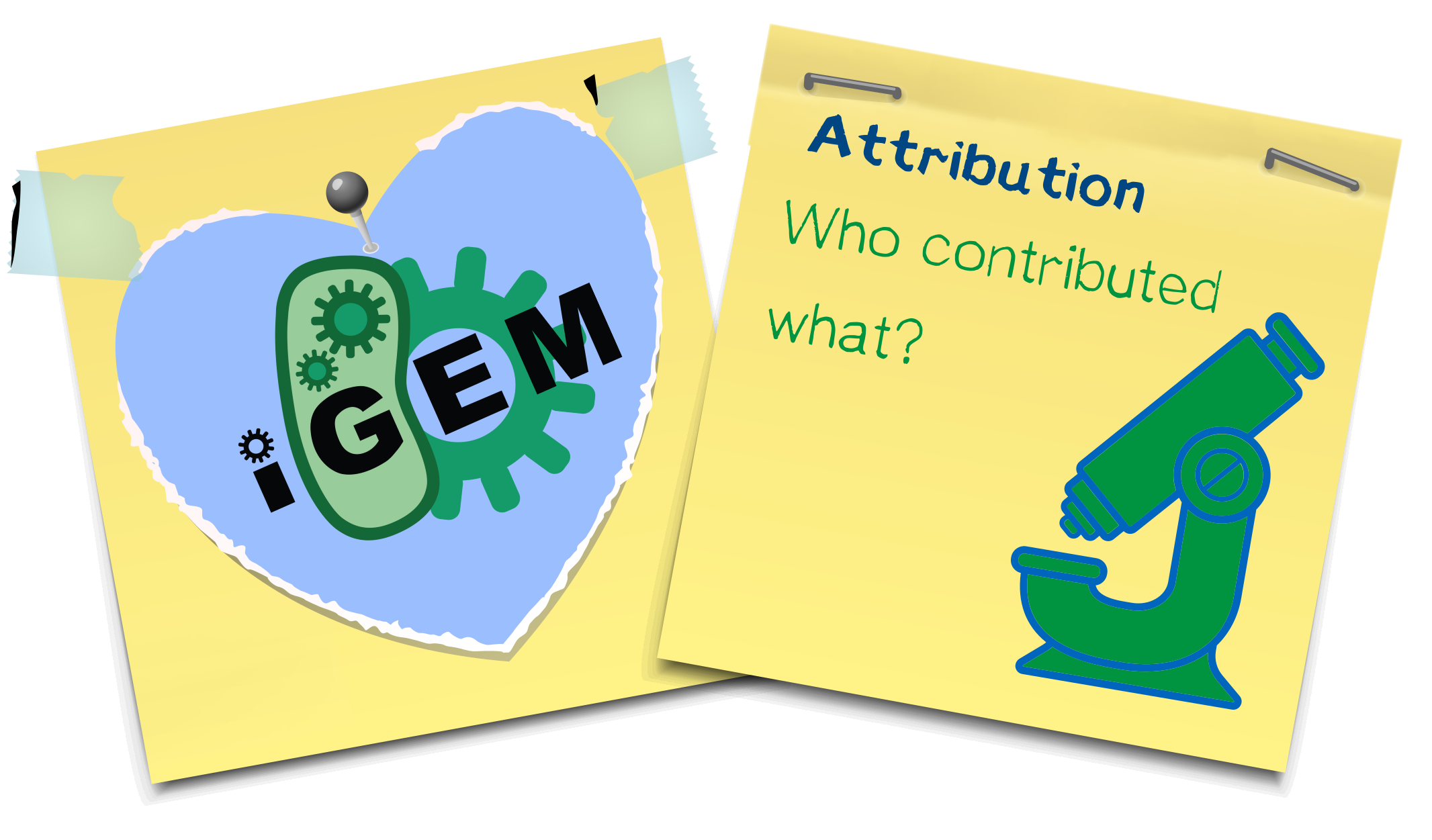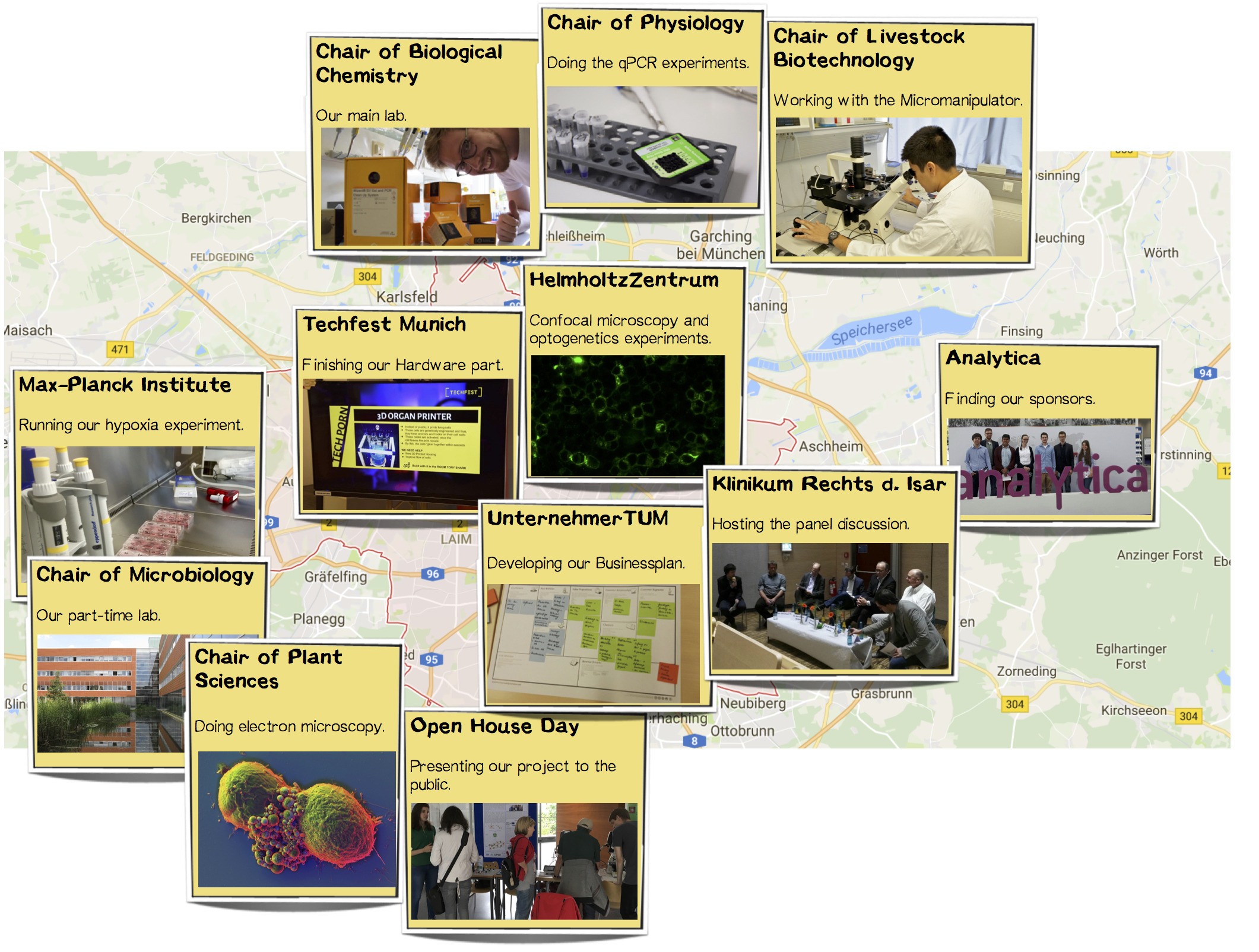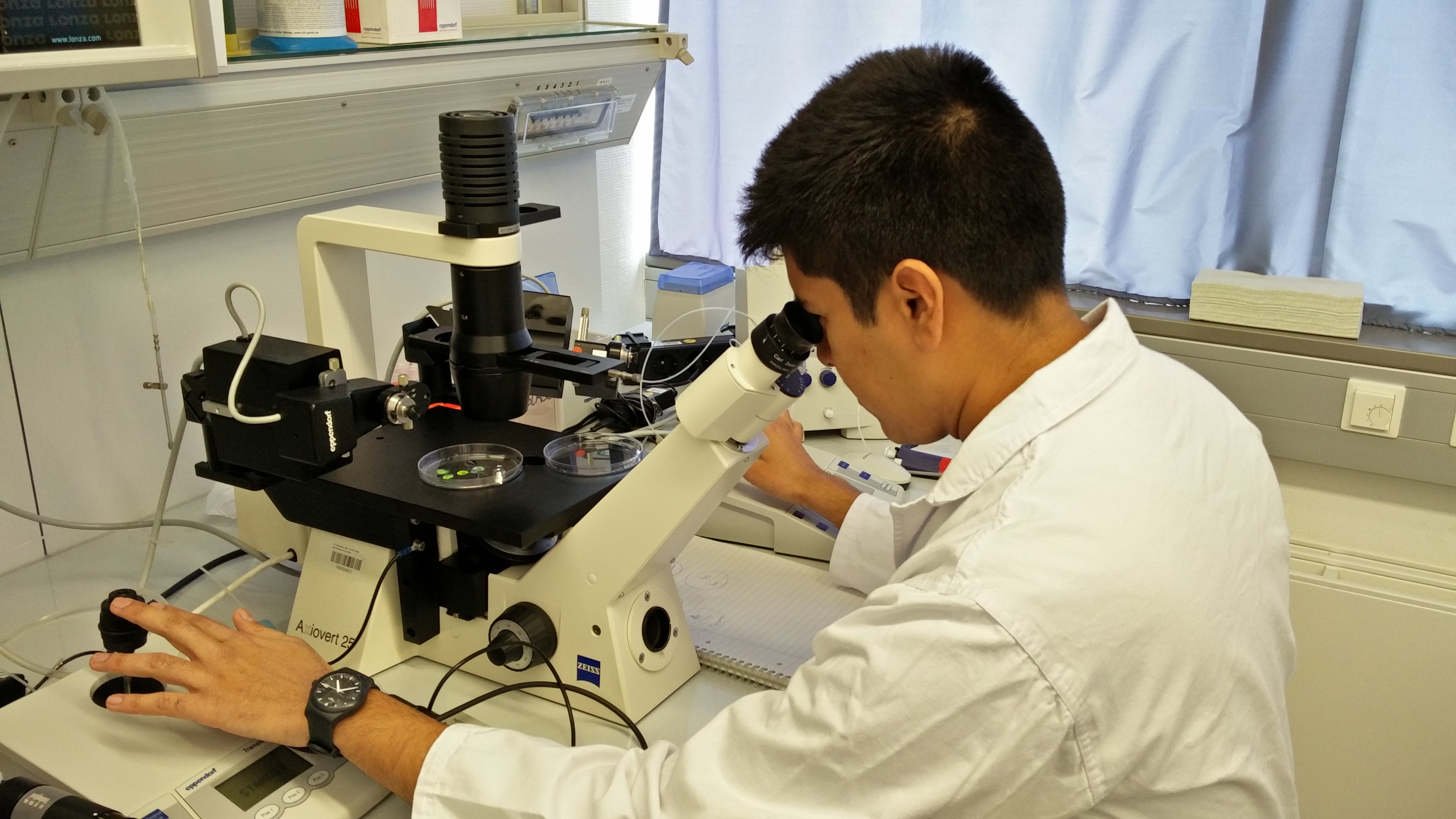Attribution
Attribution is an important point of any iGEM project as it is necessary to set the results a team obtained into the context of the support they obtained. Thus, we try to describe honestly how our project evolved, which student was responsible for which sub-project and who supported our project with a scientific or non-scientific contribution.
Finding the biotINK project
Our Journey Through Munich
During the course of our project we met many nice people willing to help and support us with lab space, knowledge or materials. Below you'll find all the stations we took during our journey to the final result of our project.
Attribution sorted by methods
All work associated with planing, conducting and the evaluation of experiments was done by student-members of our team. Advisors have assisted the students in the planing of their experiments, have introduced molecularbiological and chemical techniques to the students when they performed a specific experiment for the first time. Also the evaluation of the experiments was done by the students. After a preliminary evaluation of the results, data were discussed in the weekly team meeting. Here we mention for every technique performed during our project to allow the judged to directly contact the student that has performed the specific task they are interested in.
Protein Production and Purification
Molecular Cloning
Western Blot
Flow Cytometry
Fluorescence Microscopy
Scanning Electron Microscopy
Blood samples
For our "linker chemistry" subproject we needed fresh blood samples that contain human biotinidase. For this purpose Vivien, the student hat performed all the chemistry experiments t
Micromanipulator experiments at the Chair of Livestock Biotechnology of Professor Dr. Schnieke
We have to thank Professor Dr. Schnieke and her [http://btn.wzw.tum.de/ Chair of Livestock Biotechnology] at the WZW (TUM School of Life Sciences Weihenstephan) for so generously providing us with the possibility to use the micromanipulator at the chair's laboratory and allowing us to conduct some very specific experiments with our bioink. With the extensive help and instructions of Dr. Nicolas Ortega, researcher at the lab with a lot of experience with the device, we were able to plan experiments and test our bioprinting technique on a very tiny scale. Thereby our team members Julian and Javier were able to observe the ejection process under controlled conditions in great detail and document the behavior of our modified HEK cells containing ink. Thanks to this opportunity we could obtain useful and valuable visual material as well as a better understanding of our biotINK concept.
References





